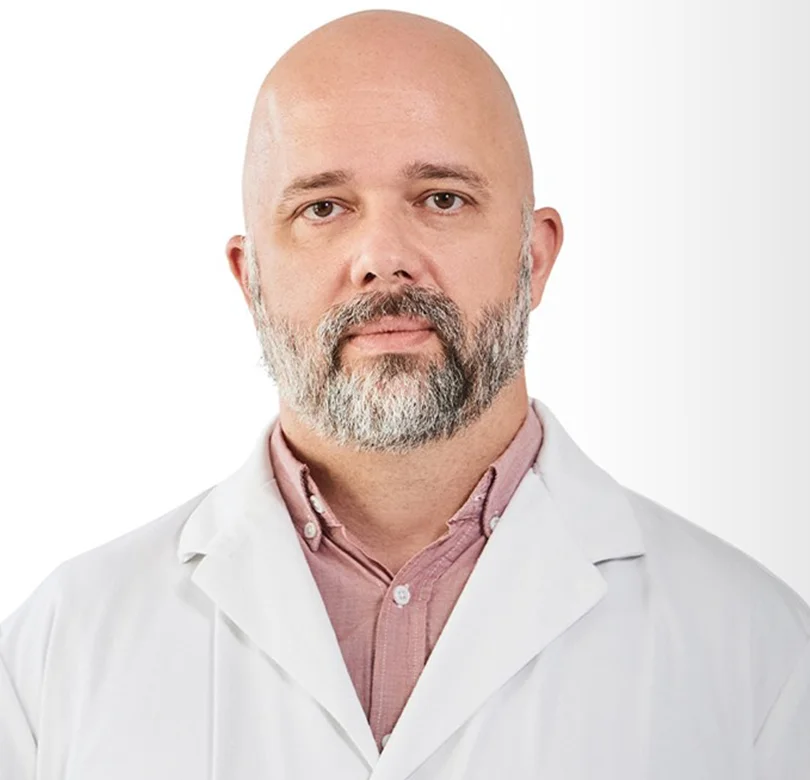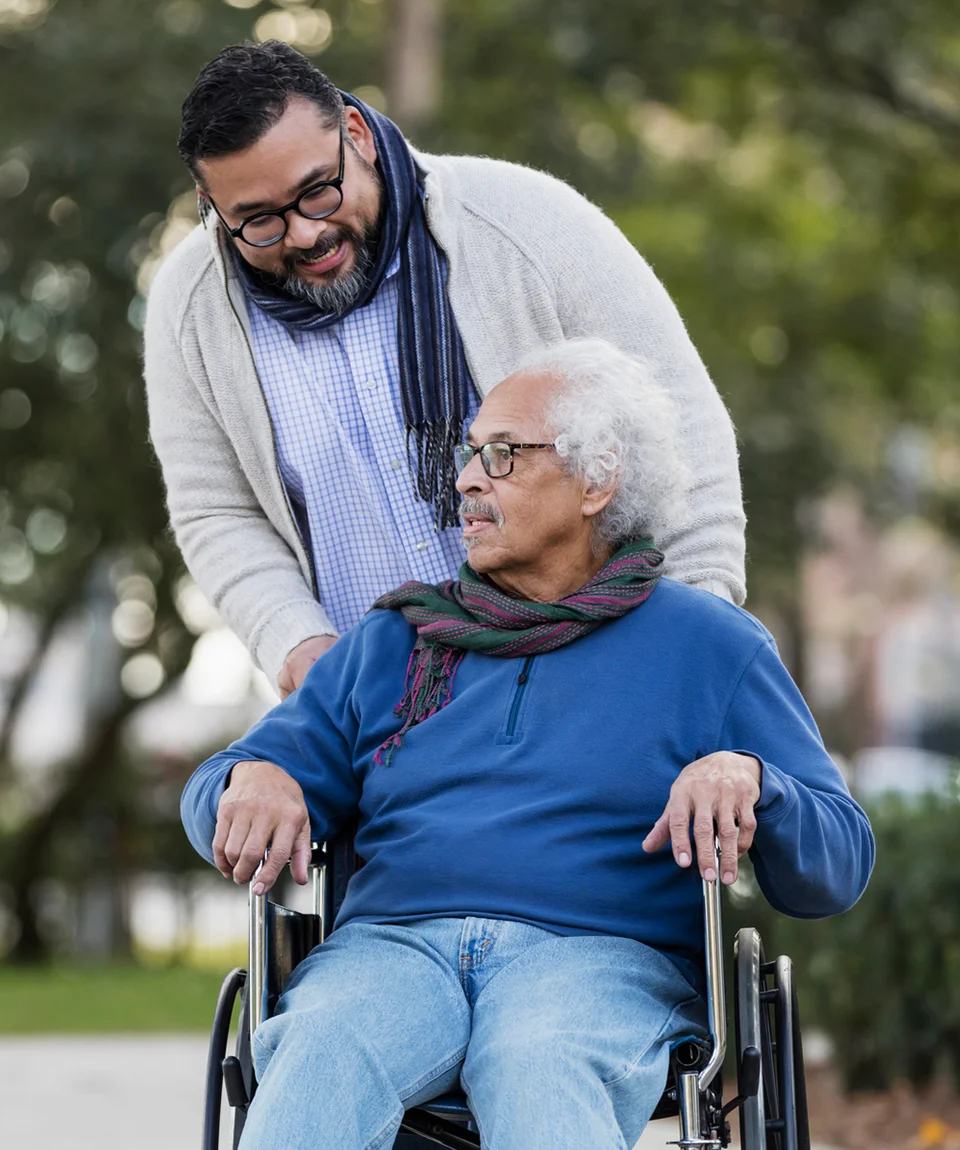What is angina?
Angina is the medical term for chest pain or discomfort caused by a temporary disruption in the flow of blood and oxygen to the heart. People describe angina discomfort as a squeezing, suffocating or burning feeling – usually in the centre of the chest, behind the breastbone.
Key facts about angina:
- It’s your heart telling you that it needs more oxygen.
- You need to stop what you’re doing, rest and/or take your medication.
- It’s almost always a sign that you have blocked arteries and heart disease.
- It’s usually a short-lived event – lasting for a few minutes.
- It’s a warning that without treatment, you are at risk for heart attack, irregular heartbeat (arrhythmia) and cardiac arrest (cardiopulmonary arrest).
All chest pain should be checked out by a healthcare provider.
Is it angina or a heart attack?
If you are experiencing chest pain for the first time, seek medical attention immediately. If you have already been diagnosed with angina and you are experiencing unusual symptoms, or if your medication isn’t working, see a healthcare provider immediately. You could be experiencing the emergency signs of a heart attack.
When does angina happen?
- Often during physical activity or stress.
- When you are in a very cold place.
- After a large meal.
Heart attacks can happen at any time.
What does angina feel like?
Angina and heart attack can feel the same. Both may cause:
- Pain or discomfort that can spread to the chest, jaw, shoulders, arms (mostly the left arm) and back.
- Chest tightness, burning, heaviness, feeling of squeezing or not being able to breathe.
Angina will sometimes cause dizziness, paleness, weakness.
Heart attack symptoms often include nausea or throwing up, weakness, tiredness or sweating.
How long does angina last?
- Three to five minutes – up to 30 minutes
- Relieved by rest or medication
Heart attacks generally last more than 30 minutes.
What brings on angina?
- Angina happens when exercise, emotional upset or other events make demands on the heart muscle.
- The heart needs extra oxygen to respond to the demands.
- If the heart muscle can’t get enough oxygen because of a blockage in blood flow, the strain causes the pain of angina.
- The pain is relieved by stopping the event that caused the strain, or by taking nitroglycerin. Nitroglycerin widens the coronary arteries to allow more oxygen-rich blood to flow to the heart.
A heart attack is caused by a lack of oxygen to the heart causing damage to the heart muscle.
What do you do if angina lasts longer than a few minutes?
- Call 9-1-1 or your local emergency response number immediately.
Types of angina
The two most common types of angina are stable and unstable. Stable angina (angina pectoris) can be managed with medication and lifestyle changes. Unstable angina may not respond to rest or nitroglycerin. It needs urgent attention.
Stable angina
- Usually lasts 5 minutes; rarely more than 15 minutes.
- Triggered by physical activity, emotional stress, heavy meals, extreme cold or hot weather.
- Relieved within 5 minutes by rest, nitroglycerin or both.
- Pain in the chest that may spread to the jaw, neck, arms, back or other areas.
- May feel like the burning sensation of heartburn or indigestion.
What you can do if you experience an episode of stable angina:
- Track what triggers it.
- Record how long it lasts.
- Note what helped ease the pain.
Unstable angina
- Often happens while you are resting.
- It occurs suddenly. You feel chest pain you did not have before.
- Discomfort lasts longer than stable angina (more than 20 minutes).
- Not relieved by rest or nitroglycerin.
- Episodes may get worse over time.
What you can do if you experience an episode of unstable angina:
- Unstable angina should be treated as a medical emergency.
- Your doctor will do tests to find out if you are experiencing unstable angina.
- You may need medical treatment to prevent a heart attack.
Variant angina (also called Prinzmetal angina)
- Caused by a spasm in the coronary arteries. Spasms can be the result of exposure to cold weather, stress, smoking, cocaine use or medications that may tighten or narrow the arteries.
- Most people with variant angina have a severe blockage in at least one major coronary artery and the spasm usually happens close to the blockage.
- Usually happens while resting, and during the night or early morning.
- Can be treated by medication.
Microvascular angina (sometimes called cardiac syndrome X or CSX)
- May be a symptom of a heart disease called coronary microvascular disease (MVD). MVD affects the smallest blood vessels of the heart.
- Microvascular angina is caused when the tiny blood vessels that feed your heart don’t function properly.
- Pain is more severe and can last longer than stable angina, sometimes 30 minutes or more.
- Pain is unpredictable. It can happen during exercise or while resting.
- Nitroglycerin may not relieve the pain.
- Treatment includes medication and lifestyle changes.
- It’s more common in women than men. About 70% of patients are women who are approaching – or have already gone through – menopause.
Cardiac syndrome X is not the same as syndrome X (also known as metabolic syndrome). Syndrome X is a group of risk factors that can lead to diabetes or heart disease.
Causes
Angina occurs when there’s not enough blood flow to the heart as a result of heart disease. Without enough blood, the heart doesn’t get enough oxygen. This triggers the chest pain.
Angina pain can be triggered by:
- physical activity
- exercise
- emotional stress
- extreme temperatures (either hot or cold)
- heavy meals
- drinking alcohol
- smoking
Angina can stem from these medical conditions:
Coronary artery disease (CAD)
Blocked arteries from coronary artery disease are the most common cause of angina.
- When your arteries are too narrow, your heart doesn’t get enough blood.
- When there’s less blood, there’s less oxygen.
- Without enough blood and oxygen, your heart works too hard which triggers angina.
Coronary artery spasm
Coronary artery spasm is a contraction in the blood vessels that supply the heart.
- If the blood vessel is constricted, blood flow to the heart can decrease or even stop.
- This lack of blood flow can cause angina or heart attack.
Uncontrolled high blood pressure
Narrowing of the valves in the heart (aortic stenosis)
Enlarged heart (hypertrophic cardiomyopathy)
Symptoms
Angina symptoms can vary from person to person, between men and women (see below), and by the type of angina you have. The main symptoms of angina are:
Shortness of breath or difficulty breathing
Pain
- Tightness, pressure or discomfort in the centre of the chest
- Ache or discomfort in areas other than the chest: jaw, shoulder, arms or back
- A burning sensation that feels like indigestion or heartburn
- Burning or cramping pain
- More common in women – vague pain, pain in the neck or throat
Fatigue
Be aware Women may describe their angina symptoms differently than men. They are more likely to experience:
- vague pain in the centre of the chest
- pain in the neck or tightness in the throat
- the feeling of a panic attack, anxiety
- dizziness, fainting
- sweating at night
- fatigue
When to call your doctor If you have chest pain that is new, worsening or constant, seek medical care immediately. You are at greater risk of:
- heart attack
- irregular heartbeat (arrhythmia)
- cardiac arrest
Diagnosis
Your healthcare provider will review your medical history and give you a complete physical exam. They may also run tests:
- blood tests
- electrocardiogram (ECG/ EKG)
- stress test (Exercise electrocardiogram)
- transesophageal echocardiogram (TEE)
- cardiac catheterization
- thallium scan
- angiography
Treatment
Angina is often controlled with a combination of medication and lifestyle changes. In some cases, surgery may be necessary.
Medication
Medication may help prevent or relieve the symptoms of angina. If medication is prescribed for you, take it exactly as directed.
- nitroglycerin (or nitro)
- Nitro is widely prescribed for angina.
- It widens or opens up the coronary arteries.
- This gets more blood and more oxygen to your heart.
- If you take nitro, always carry it with you.
- anti-platelets
- beta-blocker
- calcium channel blockers
Surgery and other procedures
Angina caused by blocked arteries can be treated surgically. By widening or bypassing the affected arteries, more blood can flow to your heart. Procedures might include:
- percutaneous coronary intervention (PCI) also known as angioplasty with stent
- coronary artery bypass surgery
Cardiac rehabilitation
Cardiac rehabilitation is a medically supervised program designed to help you recover after a heart attack or from other heart conditions. Rehab has two parts:
- Exercise training to learn how to exercise safely, strengthen muscles and improve stamina.
- Education and counselling to learn how to reduce the risk for heart problems in the future.

Dr. Heit thinks immune system could hold key to preventing heart attacks.

Lifestyle
You can lower your risk of developing other heart diseases and stroke by knowing and controlling your blood pressure, diabetes and blood cholesterol. It’s also important to lead a healthy lifestyle.
- Be smoke-free.
- Be more active. Yes, exercise can trigger angina. But moderate physical activity, approved by a healthcare provider, will help your heart health.
- Aim for a healthy weight.
- Eat a healthy balanced diet – there are some specific diets you can follow that have been proven to reduce the risk of heart disease.
- Drink less alcohol.
- Manage stress.
Talk to your doctor about the lifestyle changes that will benefit you the most.
Control other medical conditions
Take your medications as prescribed for other conditions that can make angina worse:
